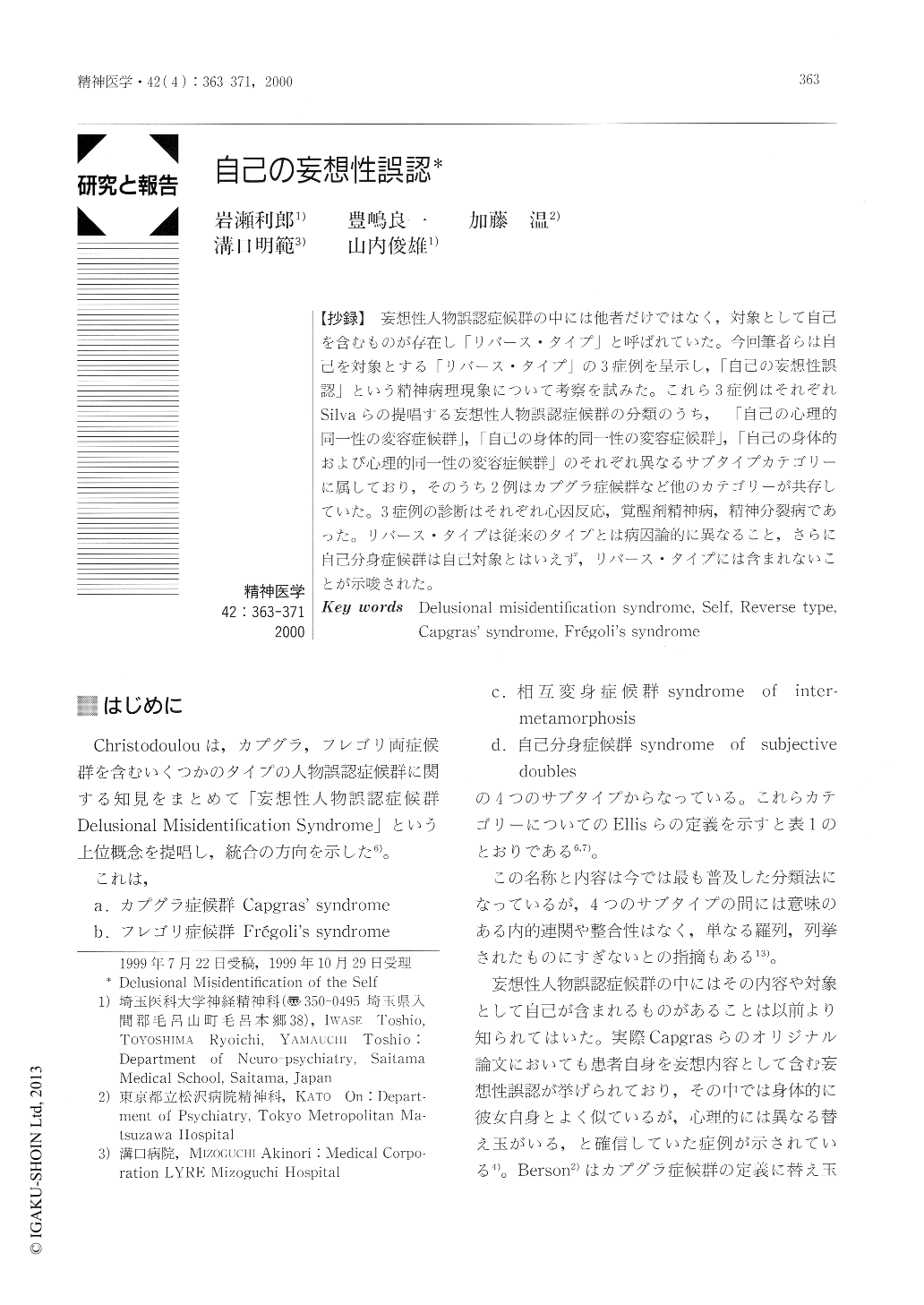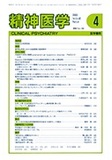Japanese
English
- 有料閲覧
- Abstract 文献概要
- 1ページ目 Look Inside
【抄録】 妄想性人物誤認症候群の中には他者だけではなく,対象として自己を含むものが存在し「リバース・タイプ」と呼ばれていた。今回筆者らは自己を対象とする「リバース・タイプ」の3症例を呈示し,「自己の妄想性誤認」という精神病理現象について考察を試みた。これら3症例はそれぞれSilvaらの提唱する妄想性人物誤認症候群の分類のうち,「自己の心理的同一性の変容症候群」,「自己の身体的同一性の変容症候群」,「自己の身体的および心理的同一性の変容症候群」のそれぞれ異なるサブタイプカテゴリーに属しており,そのうち2例はカプグラ症候群など他のカテゴリーが共存していた。3症例の診断はそれぞれ心因反応,覚醒剤精神病,精神分裂病であった。リバース・タイプは従来のタイプとは病因論的に異なること,さらに自己分身症候群は自己対象とはいえず,リバース・タイプには含まれないことが示唆された。
Delusional misidentification syndromes of the self have been referred to as 'reverse types'. We reported three cases of reverse types of delusional misidentification syndromes, and tried to investigate the psychopathological phenomenon of 'delusional misidentification of the self'. The cases were classified into three different subtype-categories, which used a new nomenclature system of delusional misidentification syndromes proposed by Silva et al., and were as follows : syndrome of altered psychological identity of the self, syndrome of altered physical identity of the self, and syndrome of altered physical and psychological identity of the self. Two of the cases were associated with other subtypes of delusional misidentification syndromes, including Capgras' syndrome. The diagnoses of the cases were psychogenic reaction, psychosis due to psychostimulants, and schizophrenia. Using the system, it is suggested that the reverse types are etiologically different from the classic types, and the syndrome of subjective doubles is not included in the reverse types, because it does not apply to the self-object.

Copyright © 2000, Igaku-Shoin Ltd. All rights reserved.


